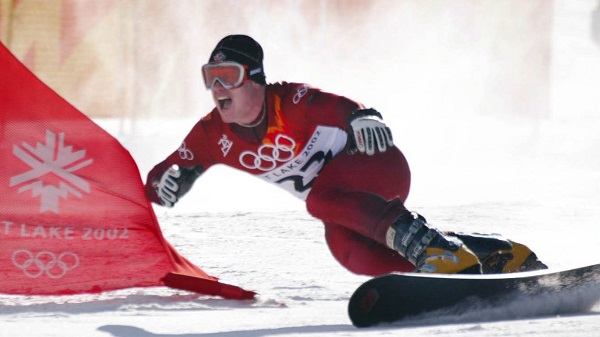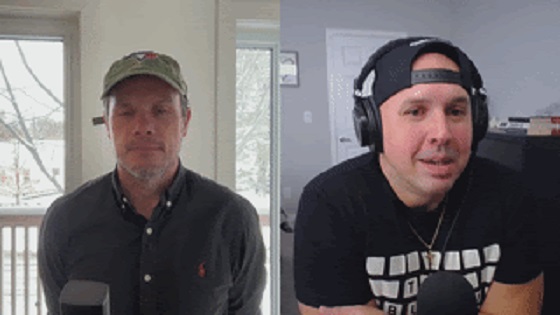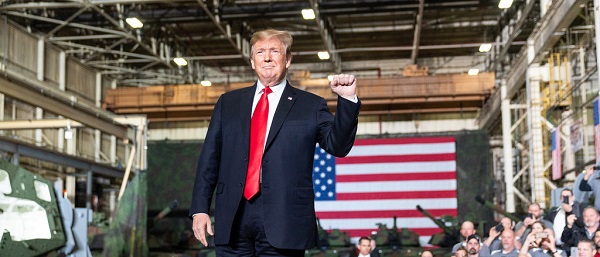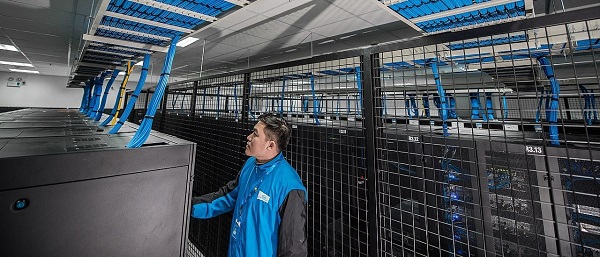Agriculture
Australia ignoring the solution to government-induced malaise

Australian PM Chris Bowen
From the Frontier Centre for Public Policy
By Alan Moran
Conscious of the imperative of self-preservation, European governments and the EU Commission itself have already taken baby steps to dilute and delay carbon emission-abating and economy-crushing agricultural and energy policies.. Not so in Australia
Studying last month’s Davos meeting of the world’s (largely self-appointed) elites, Walter Russell Mead sees an inflection point.
He says that when they listened to Argentinian President Milei promoting free market capitalism, the Davosies’ applause was more than polite clapping. There was a sense that all was not well in the supposed government-planned China, and a recognition that the more hands-on EU governmental approach has resulted in Europe slipping behind the US with its lighter government touch over the economy. This was coupled with a concern that the farmer revolts around Europe reflected a sudden rejection of trust in the establishment. Above all, Ukraine has made the Euro grandees ‘uncomfortably aware of how dependent the global system is on the leadership that only a prosperous and self-confident America can provide’.
Conscious of the imperative of self-preservation, European governments and the EU Commission itself have already taken baby steps to dilute and delay carbon emission-abating and economy-crushing agricultural and energy policies.
Not so in Australia, where governments remain totally focused on reducing the economy’s productive potential.
The Albanese government, under the Svengali and serial ministerial failure of Chris Bowen, has turbocharged carbon abatement programs crippling energy. It has:
- Vastly increased direct and regulatory-enforced expansion of the transmission lines in an attempt to allow wind and solar to work.
- Introduced a requirement for the top 215 businesses to reduce their emission levels by 30 per cent over and above reductions made necessary by the subsidies generally.
- Put in place measures to combat objections to intrusive wind farms and transmission lines.
- Refused to introduce requirements for the rectification of land and safe disposal of the materials used in wind and solar facilities.
- Vastly expanded the budgetary assistance to wind, solar, and hydrogen.
- Introduced costly requirements on firms to identify the emissions of their own activities and of those of their suppliers and customers.
The measures have been put in place by politicians, hardly any of whom have any knowledge of the energy sector, how it works, and what its costs are. Politicians have been pressed in this direction by the so-called experts, a professional elite supported by and bankrolled by subsidy-seekers, who see the global warming con as a means by which they can get paid for promoting particular forms of energy.
But the outcome is already apparent in the loss of competitiveness of our industries. The bellwether is smelting and all three of the major aluminium smelters are now in hospital care, relying on government support to offset the imposts they incur from government penalties on cheap electricity. The distress is also seen in agricultural and mining industries, which in addition to being buffeted by ever-increasing environmental costs, with their prices set globally, are seeing their margins come under pressure.
Every week brings another measure – last week we saw requirements on car retailers to ensure more fuel-efficient – higher cost cars are sold with penalties on sellers that fail to meet these requirements, penalties that will certainly increase the price Australians pay for motor vehicles.
This week, Environment Minister Tanya Plibersek boasted of spending $205 million of taxpayers’ money to buy back another 44 gigalitres of water from Murray irrigators. This is part of a process to divert 2,700 gigalitres per annum (out of 7,000 gigalitres ‘high security’ water available) from productive agriculture to uses designated as ‘environmental’. These measures massively reduce the productivity of the Murray-Darling region, responsible for 35 per cent of the nation’s farm income. They were originally justified to respond to environmental agitators’ spurious claims that irrigation was creating salt infusions, claims that were reinforced during the ‘millennial’ drought of 1997-2008 by specious assertions that climate change would drastically reduce the available water. These original rationales having been disproven, politicians’ and activists’ hostility to productive enterprise have lent the programs an ongoing inertia.
We also saw a new $100 billion a year in additional carbon tax floated by Ross Garnaut and Rod Sims; their study’s funding source was not revealed but the beneficiaries would likely be, in my opinion, subsidy-seeking economy wreckers. While ostensibly rejecting that proposal, the Prime Minister has foreshadowed extensive new decarbonisation spending programs. Nothing is being learned from the collapse of Australia’s nickel mining industry, which cannot compete with overseas mines favoured by the low-cost coal-generated electricity that Australian governments are closing down.
In addition to the current $10 billion a year in subsidies through regulations forcing the use of wind and solar, and billions of dollars spent on revoking the productive use of irrigation water, governments provide huge sums to groups that promote such waste. Unlike squandering through inefficiency that is endemic in government programs, all this spending is aimed at poisoning once highly competitive low-cost industries. Adding to measures that load the dice against employers in workplace relations, it is akin to government forcing the nation to manufacture bombs to be dropped on the people financing them.
Has anybody put the solution more succinctly than Trump-aligned Presidential hopeful, Vivek Ramaswamy? His answer was, ‘Drill. Frack. Merit over “Diversity, Equity, and Inclusion”. Stop paying people to stay at home instead of work. Fire bureaucrats. Shut down corrupt agencies. End lobbying.’
Alan Moran is a noted economist who has analysed and written extensively from a free market perspective focusing on environmental issues, housing, network industries, and energy markets. First published here.
Agriculture
Federal cabinet calls for Canadian bank used primarily by white farmers to be more diverse

From LifeSiteNews
A finance department review suggested women, youth, Indigenous, LGBTQ, Black and racialized entrepreneurs are underserved by Farm Credit Canada.
The Cabinet of Prime Minister Mark Carney said in a note that a Canadian Crown bank mostly used by farmers is too “white” and not diverse enough in its lending to “traditionally underrepresented groups” such as LGBT minorities.
Farm Credit Canada Regina, in Saskatchewan, is used by thousands of farmers, yet federal cabinet overseers claim its loan portfolio needs greater diversity.
The finance department note, which aims to make amendments to the Farm Credit Canada Act, claims that agriculture is “predominantly older white men.”
Proposed changes to the Act mean the government will mandate “regular legislative reviews to ensure alignment with the needs of the agriculture and agri-food sector.”
“Farm operators are predominantly older white men and farm families tend to have higher average incomes compared to all Canadians,” the note reads.
“Traditionally underrepresented groups such as women, youth, Indigenous, LGBTQ, and Black and racialized entrepreneurs may particularly benefit from regular legislative reviews to better enable Farm Credit Canada to align its activities with their specific needs.”
The text includes no legal amendment, and the finance department did not say why it was brought forward or who asked for the changes.
Canadian census data shows that there are only 590,710 farmers and their families, a number that keeps going down. The average farmer is a 55-year-old male and predominantly Christian, either Catholic or from the United Church.
Data shows that 6.9 percent of farmers are immigrants, with about 3.7 percent being “from racialized groups.”
National census data from 2021 indicates that about four percent of Canadians say they are LGBT; however, those who are farmers is not stated.
Historically, most farmers in Canada are multi-generational descendants of Christian/Catholic Europeans who came to Canada in the mid to late 1800s, mainly from the United Kingdom, Ireland, Ukraine, Russia, Italy, Poland, the Netherlands, Germany, and France.
Agriculture
Bovaer Backlash Update: Danish Farmers Get Green Light to Opt Out as UK Arla Trial Abruptly Ends!

In a pivotal shift, Denmark’s Veterinary and Food Administration has issued new guidance: Farmers can immediately suspend Bovaer administration if they “suspect” it poses risks to herd health. On the heels of the Danish announcement—the major UK trial of Bovaer on 30 Arla Foods farms has abruptly ended amid health fears.
The Mandate Cracks: Farmers Given the Green Light to Opt Out
On November 5, 2025, Denmark’s Fødevarestyrelsen (Danish Veterinary and Food Administration) issued a press release and accompanying guidance clarified that farmers (specifically the herd manager, or besætningsansvarlige) could immediately exempt individual cows or entire herds from the mandatory Bovaer use if they suspected it was causing or exacerbating health issues, prioritizing animal welfare under existing regulations.
Sonia Elijah investigates is a reader-supported publication.
To receive new posts and support my work, consider becoming a free or paid subscriber.
This was in response to surging reports of cow illnesses since October 1, where farms with over 50 cows have been mandated to use the synthetic additive, Bovaer (containing 3-nitrooxypropanol), developed by DSM-Firmenich. If the farms do not comply, they face heavy fines.
Bovaer Backlash: Danish Cows Collapsing Under Mandatory Methane-Reducing Additive |
||||||
|
||||||
| Article updated: November 4 | ||||||
|
The guidance emphasized that exemptions apply to cases of feed-related metabolic disorders (e.g., fatty liver, milk fever, or rumen issues) and require documentation via a “tro- og loveerklæring” (declaration of good faith) on LandbrugsInfo, with veterinary consultation recommended for severe cases. No fines would apply for such welfare-based pauses, though farmers must still meet methane reduction goals via alternatives like increased feed fat. This effectively gave the “green light” for opting out on welfare grounds.
Reports surged of Danish dairy farmers unilaterally halting Bovaer administration, accusing the government of “poisoning” livestock to meet climate targets.
A November 3, 2025, article in LandbrugsAvisen (Denmark’s leading agricultural newspaper), quoted veterinarian Torben Bennedsgaard from BoviCura (a specialized cattle health advisory service closely tied to Danish dairy producers). He stated: “Every other farmer has problems with Bovaer.”
“Bovaer is a proven, effective and safe solution”
A spokesperson for DSM-Firmenich, the company that developed Bovaer, told Agriland, that “animal welfare is our highest priority”. They went on to state: “We are actively engaging with the relevant organisations to ensure that all these concerns are fully investigated and properly addressed..In previously reported cases, Bovaer was not identified as a contributing factor to the health concerns raised…Bovaer is a proven, effective and safe solution that has been successfully used for over three years by thousands of farmers in over 25 countries.”
UK Ripple Effects: Arla Trial Abruptly Halted
On 7 November, the BBC reported that the major UK trial of Bovaer on 30 Arla Foods farms concluded earlier than planned amid “farmer health concerns” for cows, echoing Danish reports. It stated: ‘Bovaer is now the focus of an investigation in Denmark after farmers raised fresh concerns but manufacturer DSM-Firmenich said the additive was “proven, effective and safe.”’
Arla, which supplies major retailers like Tesco and Aldi, is now reviewing data before deciding on wider rollout. The trial aimed to cut methane by 30% but faced criticism for lacking transparency on animal impact.
Jannik Elmegaard, of the Danish Food and Veterinary Administration, told the BBC: “They very aware that some herd owners have reported animals showing signs of illness after being fed with Bovaer” but it was “unclear how many cows were affected”.
Last year, I reported on the UK’s Arla trial—whilst digging through various safety assessment reports on Bovaer, I came across several troubling findings and anomalies.
BREAKING: Methane-Reducing Feed Additive Trialled in Arla Dairy Farms |
||||||
|
||||||
| On November 26th, Arla Foods Ltd. announced via social media their collaboration with major UK supermarkets like Tesco, Aldi, and Morrisons to trial Bovaer, a feed additive, aiming to reduce methane … | ||||||
|
In a public rebuttal, Frank Mitloehner, Professor of Animal Science at UC Davis and Director of the Clarify Center for Enteric Fermentation Research, posted on X ”Hogwash!”—dismissing viral claims of Bovaer-related cow health issues in Denmark by highlighting his lab’s ongoing research and widespread U.S. usage data.
The green light in Denmark is not a mere victory—it’s a damning admission that the emperor’s new feed has holes big enough for a whole herd to escape through.
As Arla licks its wounds and DSM-Firmenich doubles down on “proven safe,” the real trial begins: can climate crusaders stomach the science when it bites back?
If you appreciate the hard work that I do as an independent investigative journalist,
please consider supporting me with a paid subscription.
Subscribe to Sonia Elijah Investigates
-

 Crime1 day ago
Crime1 day ago‘Modern-Day Escobar’: U.S. Says Former Canadian Olympian Ran Cocaine Pipeline with Cartel Protection and a Corrupt Toronto Lawyer
-

 Indigenous2 days ago
Indigenous2 days agoTop constitutional lawyer slams Indigenous land ruling as threat to Canadian property rights
-

 Daily Caller2 days ago
Daily Caller2 days agoDemocrats Explicitly Tell Spy Agencies, Military To Disobey Trump
-

 National10 hours ago
National10 hours agoPsyop-Style Campaign That Delivered Mark Carney’s Win May Extend Into Floor-Crossing Gambits and Shape China–Canada–US–Mexico Relations
-

 Alberta2 days ago
Alberta2 days agoAlberta on right path to better health care
-

 COVID-197 hours ago
COVID-197 hours agoCovid Cover-Ups: Excess Deaths, Vaccine Harms, and Coordinated Censorship
-

 Daily Caller2 days ago
Daily Caller2 days agoALAN DERSHOWITZ: Can Trump Legally Send Troops Into Our Cities? The Answer Is ‘Wishy-Washy’
-

 Alberta21 hours ago
Alberta21 hours ago‘Weird and wonderful’ wells are boosting oil production in Alberta and Saskatchewan










